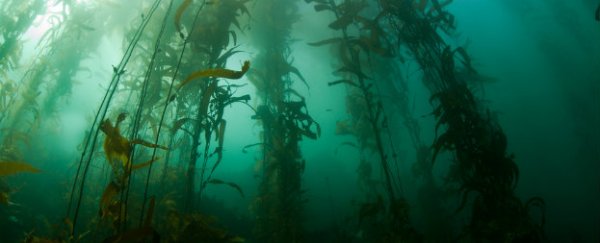The common algae that is clogging up our beaches and coastlines could soon be a valued natural resource.
Researchers from the KTH Royal Institute of Technology, Sweden, have started the Seafarm project which involves growing underwater algae farms on ropes. The team collect excess algae from the Baltic Sea, along Sweden's southern coast, and then cultivate it in the farm. After six months, the algae is harvested and refined, and then produced into eco-friendly food, medicine, plastic and energy. Production is all year round, and during the winter the cultivation is lowered deeper into the sea to avoid ice formation.
The sea is extremely rich in nutrients, which results in an over-production of algae. Some species of algae release a poisonous toxin when they bloom which is harmful to humans and animals in high concentrations. The excess of algae can threaten the ecosystem, and the Swedish team want to see it as a resource rather than a problem.
"What's more, we're also acting to help the environment. Partly, when we make use of the excess algae which otherwise contribute to the excess fertilisation of water bodies and partly when we cultivate algae that actually absorb nitrogen and phosphorus from the sea," said Fredrik Gröndahl, head of the project, in a press release.
The sea has a huge production capacity, yet humans only use one percent of the seas' ecosystem for generation of resources. Algae has a very high nutritional value and contains many vitamins, amino acids, and minerals. It has become increasingly popular as a food source, and it can even be used to produce sugar, spices, oil, and animal feed.
"We really need new solutions, such as harvesting the excess algae for fuel and cultivating new, pure algae for special products and foodstuffs," said Gröndahl.
The team believe that the coasts of Sweden are ideal for algae cultivation, and they have set up one farm so far. They expect that it will take some time for people to get on board with the project, but hope it will contribute to sustainable development while helping the marine environment.
"It will be an energy forest at sea. We plan to build large farms on 2 hectares right from the start, since the interest in the activities will grow rapidly when more farmers and entrepreneurs wake up to the opportunities and come into the picture," said Gröndahl. "In 15 years time, we will have many large algae cultivations along our coasts; and Seafarm will have contributed to the creation of a new industry from which people can make a living."
Source: AlphaGalileo
